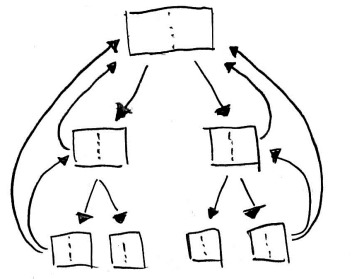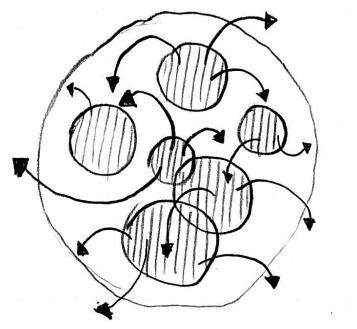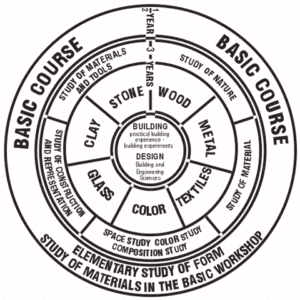In the readings of my PhD research, I came across the term reductionism a lot. This term is used to criticize or warn against the trap of analyzing social phenomena in a somewhat restricted way, with no clear definition of its own. After years of reading those uses, I got a tacit understanding of what can be considered reductionism. However, I did not have a clear definition nor an alternative to reductionism until I came across the article Science in the systems age by Russell Ackoff.
What strikes me is that his definition explains so much of what is going on in design theory. The article defines reductionism in this way:
It consists of the belief that everything in the world and every experience of it can be reduced, decomposed, or disassembled to ultimately simple elements, indivisible parts. These were taken to be atoms in physics; simple substances in chemistry; cells in biology; monads, directly observables, and basic instincts, drives, motives, and needs in psychology; and psychological individuals in sociology.
Reductionism gave rise to an analytical way of thinking about the world, a way of seeking explanations and, hence, of gaining understanding of it. For many, ‘analysis’ was synonymous with ‘thought.’ Analysis consists, first, of taking what is to be explained apart-disassembling it, if possible, down to the independent and indivisible parts of which it is composed; secondly, of explaining the behavior of these parts; and, finally, aggregating these partial explanations into an explanation of the whole. (p.661)
I like to sketch concepts to understand them, so this is my attempt to graphically depict reductionism from the above definition.

In design theory, this kind of reductionism leads to understanding design as a generic process of problem solving:
- Define a problem
- Break down the problem into sub-problems
- Find a solutions for each sub-problem
- Find an overall solution that integrates all sub-solutions into a coherent whole
The process is for the most analytical, yet the last phase implies a synthesis. Due to this synthesis being very difficult to reach, such problem solving process is hardly ever followed like that in practice. Practitioners know that it is difficult to reassemble a design thing after it is completely torn apart. The synthesis will most likely be one-sided, relying on one of the parts instead of the whole, an undesired result.
If practitioners are not following reductionism, what are they doing then? This is something that puzzled me for a while, until I found the counter-notion of expansionism in the aforementioned article. This is the definition by Ackoff:
Expansionism is a doctrine maintaining that all objects and events, and all experiences of them, are parts of larger wholes. It does not deny that they have parts, but it focuses on the wholes of which they are part. It provides another way of viewing things, a way that is different from, but compatible with, reductionism. It turns attention from ultimate elements to a whole with interrelated parts, to systems. (p. 663)
And here goes my attempt to depict expansionism, in contrast to reductionism.

Expansionism seems to be similar to the ideal of holism in design, i.e. considering all the aspects involved in a design situation. The difference, I believe, is that expansionism gives a more detailed account of what designers are in fact doing to achieve holism. In my understanding, they are:
- Departing from the assumption that they do not know the whole
- Identifying the parts as they are, not as they should be in an ideal way, even if that is very chaotic
- Looking at the interrelationships between the parts
- Expanding the understanding of the whole based on the understanding of the relationships
- Creating new relationships between the parts and the parts and the whole
This matches quite close to the dialectical method of historical analysis. That is why I chose to develop my definition of expansive design on a dialectics between activity and space. In fact, I believe that an alternative account of design (such was the one I’m trying to bring forth) has to come from this side. The formal logic used by many other design theories cannot account for the expansive leaps of social transformation that I’m trying to grasp with expansive design.
Beyond my own thesis, expansionism seems to be useful to justify why building up design theory based on dialectics instead of logics.

